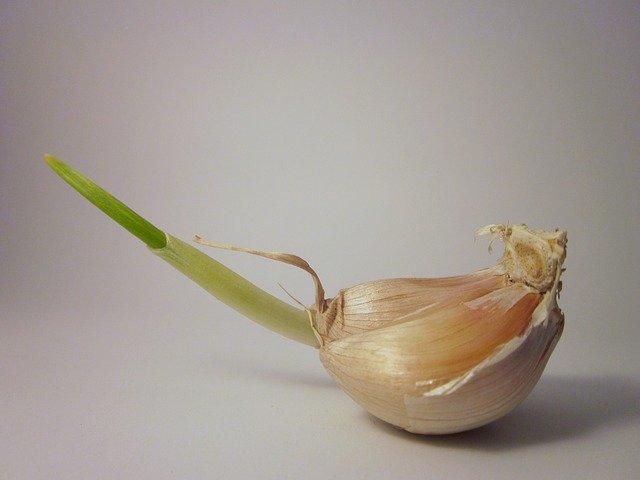
We’ve all seen it – an old garlic bulb in the kitchen, bright green shoots sprouting from the cloves. Most of us think it’s past its best and toss it in the trash.
But hang on, did you know that this sprouted garlic might actually be better for you than fresh garlic?
That’s right, scientists have discovered that sprouted garlic is packed with more heart-friendly antioxidants than its fresh counterparts.
Garlic has a history of being used for medicinal purposes for thousands of years. Today, it’s still celebrated for its health benefits.
Consuming garlic, either by eating it or in supplement form, is promoted as a natural way to lower cholesterol levels, reduce blood pressure, and decrease the risk of heart disease.
It’s even thought to boost our immune system and aid in fighting off cancer. But all these benefits have mostly been associated with fresh, raw garlic.
Sprouted garlic, on the other hand, hasn’t gotten much spotlight until now. Here’s a fun science fact for you: when seedlings grow into green plants, they produce a lot of new compounds, including ones that protect the young plant from harmful pathogens.
Jong-Sang Kim’s team of scientists believed that a similar process could be happening when green shoots grow from older garlic bulbs.
Previous research showed that sprouted beans and grains have higher antioxidant activity. With this in mind, Kim’s team decided to test if the same holds true for sprouted garlic. And guess what? They were right!
Their tests showed that garlic sprouted for five days had higher antioxidant activity than fresher, younger bulbs. It even had different metabolites, meaning that it makes different substances. What’s more, extracts from this sprouted garlic helped protect cells from certain types of damage in laboratory tests.
So, the next time you see sprouted garlic, don’t toss it out! Remember, sprouting might just be a handy way to boost the antioxidant potential of your garlic. Now that’s food for thought!
Source: Zakarova A, et al. (2014). Garlic Sprouting Is Associated with Increased Antioxidant Activity and Concomitant Changes in the Metabolite Profile. Journal of Agricultural and Food Chemistry, 62: 1875. DOI: 10.1021/jf500603v.



